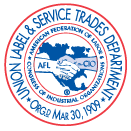According to Bloomberg Law’s database of work stoppages, the U.S. has seen nearly 40 strikes since August 1. That number is almost double the number of work actions compared to the same time last year.
After decades of decline in influence and power, organized labor appears to be having a resurgence. In September, Nabisco workers ended a weeks-long strike after successfully opposing several changes, including a two-tier benefit system that would have offered lower-quality but more expensive health care benefits to new hires.
A two-tier policy creates two different pay and benefit structures for existing and future employees. Two-tiered pay or benefits systems aren’t new; they’ve been around for years, and many labor unions have unfortunately agreed to them in the past.
According to Director of Labor Education Research at Cornell University’s School of Industrial and Labor Relations Kate Bronfenbrenner, “there was a big push for them in the 80s, then a wave in the 90s, and now we’re seeing them again. It appears to be contagious.”
During the Great Recession, manufacturers pushed for and won two-tier systems, as workers held little power as companies needed to reduce costs or face going out of business.
But in today’s tight labor market, who holds the power?
Like the workers at Nabisco, unionized employees at John Deere, Kellogg, and Kaiser Permanente say their companies, want two-tier systems.
At Deere, nearly 10,000 employees stood firm in rejecting two recent offers from the company before finally accepting an offer that raised wages and held on to additional benefits. Deere employees successfully fought back the two-tier proposal.
After the second proposed agreement, workers told reporters the deal looked good on paper but “the proposal didn’t address the existing two-tier retirement system and would have further eroded benefits for anyone hired after November 1.”
At Kellogg, workers allowed a one-time concession in their 2015 contract that granted the company the ability to institute a temporary two-tiered wage system with tight caps for how many workers could be considered transitional versus legacy. Now the workers say Kellogg wants to make that concession permanent.
Kellogg’s workers are classified as either legacy or transitional. Legacy workers are paid around $33 per hour, have healthcare covered by the company, and have a pension. Transitional workers make about $19 per hour, pay for healthcare costs, and do not have a pension.
Right now, the only way for a worker to advance from transitional to legacy is for a legacy worker to retire.
Members of the Bakery, Confectionary, Tobacco, and Grain Millers (BCTGM) union say the company wants to end the advancement of transitional workers to legacy status and push all workers into the lower wage classification.
In an interview with NBC News, BCTGM International Secretary-Treasurer David Woods said, “these future workers are like unborn babies. They don’t have a face or a name yet, but we know they’re coming behind us. Companies want to take away from future employees, and that isn’t acceptable.”
Nearly 32,000 West Coast nurses and health care professionals at Kaiser Permanente voted to strike in mid-November if the company and the coalition of labor unions representing employees didn’t reach an agreement. “While we’re saving the world, they’re planning our demise,” Kim Mullen, a nurse at Kaiser South Bay in Los Angeles and a union officer, told NBC. “It’s so insulting after all we’ve done.”
The unions and Kaiser announced a proposed settlement just before the November 15 strike deadline.
Kaiser’s had proposed a two-tier system that would have paid new hires 26 percent less than current levels.
Two-Tier Systems: Unequal Pay for Equal Work
In 2010, Kohler Co. adopted a two-tier wage scale; it was a dark time for workers and companies alike. But more than a decade later, the two-tier system was still in place, and workers were resentful. In 2015, UAW members at the bath and kitchen manufacturer went on a more than month-long strike that successfully narrowed the gap in the two-tier system, but they couldn’t close it entirely. That was until 2020, when the company and the union opened new contract negotiations. In December, Kohler agreed to a new five-year contract that phases out the two-tiered wage scale by 2023. The agreement, negotiated a year ahead of schedule, benefitted Kohler and workers, bringing the younger workers’ pay and benefits up and helping the company find workers in a competitive labor market.
“If you’re not equal in pay, you’re not equal,” said Kevin Bradshaw, a Kellogg worker and vice president of BCTGM Local 252G. “We’re fighting corporate greed because none of these companies asking for a two-tier system actually need it; they just want it. Time has run out on giving companies big concessions, settling for things and not fighting back.”






